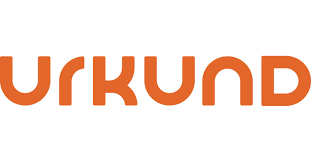Promoting Critical Thinking through the Modification of Questioning Verbs in Writing Assignments: A Study
DOI:
https://doi.org/10.17398/1988-8430.31.13Keywords:
Pensamiento crítico, composición, Taxonomía de Bloom, Motivación del estudiante, Preguntas/enunciadosAbstract
Este estudio propone un objetivo doble. Por un lado, un análisis del pensamiento crítico y su aplicación a través de la escritura en alumnos de 3º de la E.S.O. Para ello, se modificó el lenguaje de las preguntas de escritura del libro de texto. A continuación, se implementó una unidad didáctica que destaca la importancia del pensamiento reflexivo para el desarrollo de textos más ricos. Por tanto, el objetivo del estudio es la modificación de verbos de susodichas preguntas por otros en niveles altos de la taxonomía de Bloom. Esta información se recogió a través de observación, cuestionarios inicial y final, y una unidad didáctica con actividades de escritura evaluadas.
Abstract
The aim of the present study is twofold. First off, an analysis regarding 3rd E.S.O students' critical thinking application was procured from their performance from a piece of writing. To promote critical thinking, modification of the language of questions in the course book was purposely executed. This was then followed by an implementation of a whole Didactic Unit designed to enhance the role of reflective questions in the creation of more complex writings. This language modification was erected through the use of verbs contained in Bloom’s taxonomy higher orders. The changes that led students to write longer texts or express more elaborate ideas are also addressed. The data was collected via observation, pre and post questionnaires, and writing assignments.
Keywords: Critical thinking; Writing; Bloom’s taxonomy; Student motivation; Questions.
References
Benson, M. J., Sporakowski, M. J., & Stremmel, A. J. (1992). Writing reviews of family literature: Guiding students using bloom's taxonomy of cognitive objectives. Family Relations, 65-69.
Caroselli, M. (2009). 50 Activities for Developing Critical Thinking Skills. Amherst, Massachusetts: HDR Press.
Clark, M. M. (2009). Beyond critical thinking. Pedagogy, 9(2), 325-330.
Cohen, M. (1993). Making critical thinking a classroom reality. PS: Political Science & Politics, 26(02), 241-244.
Cuseo, J. (2013). Los Angeles Valley College. Retrieved 2015 йил 25-February from http://www.lavc.edu/profdev/promotethink.pdf
E-asttle. (2012). e-asTTle. Retrieved March 25, 2015, from e-asTTle: http://easttle.tki.org.nz/content/download/1556/6262/file/easTTle%20generic %20rubric.pdf
Elder, L., and Paul, R. (1999). Critical thinking: Basic theory & Instructional structures. Dillon Beach, CA: The Foundation for Critical Thinking.
Fitzgerald, J., & Baird, V. A. (2011). Taking a step back: Teaching critical thinking by distinguishing appropriate types of evidence. PS: Political Science & Politics, 44(03), 619-624.
Freeman, K. E., Alston, S. T., & Winborne, D. G. (2008). Do learning communities enhance the quality of students' learning and motivation in STEM? The Journal of Negro Education, 227-240.
Gadzella, B., Ginther, D., & Bryant, G. (1997). Prediction of performance in an academic course by scores on measures of learning style and critical thinking. Psychological Report, 81, 595-602
Garrison, D. R. (1991). Critical thinking and adult education: A conceptual model for developing critical thinking in adult learners. International Journal of Lifelong Education, 10(4), 287-303.
Guichard, J. (2006). Shifting pedagogy: Integrating critical thinking and artistic practice in the voice and speech classroom. Theatre Topics, 16(2), 145-166.
Halpern, D. F. (2001). Assessing the effectiveness of critical thinking instruction. The Journal of General Education, 50(4), 270-286.
Halpern, D. F. (2003). Thought and knowledge: An introduction to critical thinking. Routledge.
Halx, M. D., & Reybold, L. E. (2006). A pedagogy of force: Faculty perspectives of critical thinking capacity in undergraduate students. The Journal of General Education, 54(4), 293-315.
Harmer, J. (2012). Teacher Knowledge. Harlow, Essex: Pearson Education.
Johnson, J. P. (1977). Integrating educational theory and history. History Teacher, 425-433.
Kastberg, S. E. (2003). Using bloom's taxonomy as a framework for classroom assessment. Mathematics Teacher-Washington then Reston Va-, 96(6), 402-405.
McPeck, J. E. (1981). Critical thinking and education. New York: St. Martin's.
McPeck, J. E. (1990). Teaching Critical thinking: Dialogue and Dialectic. Routledge. New York.
Monnier, C. (2010). GlobalSociology. Retrieved February 20, 2015, from Globalsociology: https://globalsociology.pbworks.com/w/page/14711154/Agents%20of%20Socialization.
Pascarella, E. T., & Terenzini, P. T. (1991). How college affects students (Vol. 1991). San Francisco: Jossey-Bass.
Paul, R. (1989). Critical Thinking Handbook: High School. A Guide for Redesigning Instruction. Center for Critical Thinking and Moral Critique, Sonoma State University, Rohnert Park, CA 94928.
Paul, R., Binker, A.J.A., Jensen, K., & Kreklau, H. (1990). Critical thinking handbook: 4th-6th grades. A guide for remodeling lesson plans in language arts, social studies, and science. ERIC.
Paul, R., Binker, A.J.A., Martin, D., & Adamson, K. (1995a). Critical thinking handbook: High school. Rohnert Park, CA: Sonoma State University.
Paul, R., Binker, A.J.A., Martin, D., Vetrano, C., & Kreklau, H. (1995b). Critical thinking handbook: 6th-9th grades. Rohnert Park, CA: Sonoma State University.
Schunk, D., Pintrich, P., & Meece, J. (2008). Motivation in education: Theory, research, and applications (3rd edition). Upper Saddle River, NJ: Pearson Education.
Sosniak, L. A. (1994). Bloom's taxonomy. L. W. Anderson (Ed.). Univ. Chicago Press.
Tsui, L. (2002). Fostering critical thinking through effective pedagogy: Evidence from four institutional case studies. The Journal of Higher Education, 73(6), 740-763.
Tsui, L. (2007). Cultivating critical thinking: Insights from an elite liberal arts college. The Journal of General Education, 56(3), 200-227.
Van Gelder, T. (2001). How to improve critical thinking using educational technology. Meeting at the Crossroads: Proceedings of the 18th Annual Conference of the Australasian Society for Computers in Learning in Tertiary Education, 539-548.
Walters, K. S. (1990). Critical thinking, rationality, and the vulcanization of students. The Journal of Higher Education, 448-467.
Zascavage, V., Masten, W. G., Schroeder-Steward, J., & Nichols, C. (2007). Comparison of critical thinking in undergraduates and graduates in special education. International Journal of Special Education, 22(1), 25-31.
Downloads
Published
Issue
Section
License

Tejuelo is published with license Creative Commons Reconocimiento-NoComercial-SinObraDerivada 3.0 España.

.jpg)



